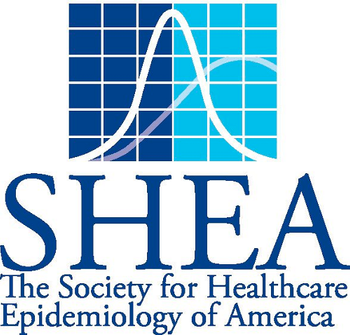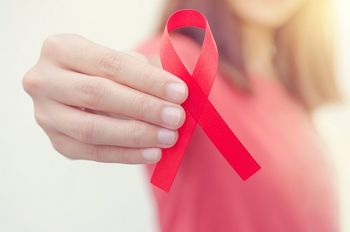
Researchers from McGill University, Montreal, have found that maple syrup extracts can enhance the effectiveness of certain antibiotics used against pathogenic bacteria.

Researchers from McGill University, Montreal, have found that maple syrup extracts can enhance the effectiveness of certain antibiotics used against pathogenic bacteria.

The CDC has released the first estimates of state-specific rates of primary and secondary syphilis among men who have sex with men.

Hawaii is experiencing a cluster of rat lungworm disease cases on the Big Island as well as on the island of Maui; a few suspected cases are still undergoing investigation.

At the SHEA Spring 2017 Conference, Laurie Conway, RN, PhD, CIC, provided conference goers with options that will allow them to “pick their battles” when it comes to ensuring effective surveillance targets.

At the SHEA Spring 2017 Conference on March 30, 2017, David P. Calfee, MD, MS, discussed the role that the environment plays in transmission of healthcare-associated infections, and why cleaning and disinfection measures need to be improved to reduce these infections.

UCL scientists have found that MRI scans can be used as a way to identify HIV persistence in the brain even when it is controlled by treatment efforts.

Rebekah Moehring, MD, MPH, shared strategies for building internal capacity to meet infection prevention goals in resource-limited settings at the SHEA Spring 2017 Conference on March 29, 2017.

On March 30, 2017, at the SHEA Spring 2017 Conference, Thomas Sandora, MD, MPH, shared some tips regarding ways to manage movement outside of the room for patients who are on contact precautions.

On March 30, 2017, plenary speaker Matthew Kreuter, PhD, MPH, provided SHEA Spring 2017 Conference attendees with insight on how behavior change strategies play a part in infection prevention in hospital settings.

Sara Cosgrove, MD, MS, current president of the Society for Healthcare Epidemiology of America (SHEA), painted a picture of the new landscape of antibiotic stewardship in the Opening Plenary of the 2017 SHEA Spring Conference held in St. Louis, Missouri.

Contagion® will be covering the conference, and so keep a look out for session coverage, as well as interviews with some of the key presenters.

A multi-institution research team has found that daptomycin is effective and well-tolerated in children.

As we reflect on the progress made in the fight against tuberculosis (TB), the Centers for Disease Control and Prevention stress that without actions to accelerate progress, the goal of eliminating TB in the United States by the end of the century will not be met.

Harvard T. H. Chan School of Public Health researchers report that a new rotavirus vaccine was found to be 66.7% effective.

Duke Health researchers have found that a UVC machine use can reduce transmission of harmful superbugs in hospital settings.

Today is National Native HIV/AIDS Awareness Day (NNHAAD), a day dedicated to promoting awareness of the impact that HIV/AIDS has on Native communities, particularly American Indians, Alaska Natives, and Native Hawaiians.

The first international Open Science Prize has been awarded to Fred Hutchinson Cancer Research Center and University of Basel researchers for a software tool that is capable of tracking viral disease outbreaks.

CDC researchers found that not only is the proportion of US food that is imported is increasing, but the number of food-borne disease outbreaks associated with imported foods is also increasing.

CDC researchers examine STD services and confidentiality issues among individuals between 15 and 25 years of age and find that not spending time alone with a healthcare provider, without a parent in the room, may limit use of STD services for some youths.

March 10, 2017 marks the 12th observance of National Women and Girls HIV/AIDS Awareness Day, a day that is dedicated to raising awareness about the impact of HIV/AIDS on women and girls and encouraging them to take action when it comes to preventing infection.

This year, the World Health Organization (WHO) released a new guideline on sexual and reproductive health and the rights of women who are living with HIV.

Penn State researchers have been granted $2.35 million to go towards finding a way of better predicting infectious disease outbreaks.

The Georgia Department of Public Health reports that the number of HIV infections in Georgia has dropped 6% each year from 2008 to 2014.

The Centers for Disease Control and Pevention and the US Food and Drug Administration are currently investigating an E. coli outbreak that has managed to spread over five states and has infected twelve individuals thus far.

A recent study from the researchers at the University of Virginia has provided insight into how multidrug-resistant bacteria living in sink drainpipes can spread in hospitals.

Prenatal care for pregnant women with antenatal Zika-related microcephaly needs to be modified to include conversations that include pregnancy options as well as neonatal specialty consultations that will address infant special care needs, economic burden, and other factors.

Carmen D. Zorrilla, MD, professor of obstetrics and gynecology, University of Puerto Rico, School of Medicine, shared her research which aimed to evaluate the growth patterns of fetuses whose mothers acquired Zika virus during pregnancy “and showed no prenatally detectable structural anomalies or maternal conditions that could affect fetal growth.”

Brown University researchers propose thinking about pre-exposure prophylaxis (PrEP) as a nine-step continuum of preventive care, one that improves uptake and focuses on retention in care.

Pedro Fernando de Costa Vasconcelos, MD, PhD, director of the WHO Collaborating Center for Arbovirus and Research, Evandro Chagas Institute, took a closer look at the Zika virus in Brazil during his presentation at The First International Zika Conference.

At The First International Zika Conference, Lenore Pereira, PhD, discussed her research regarding the question of how Zika virus is able to spread from maternal blood to the placenta to reach the fetus.